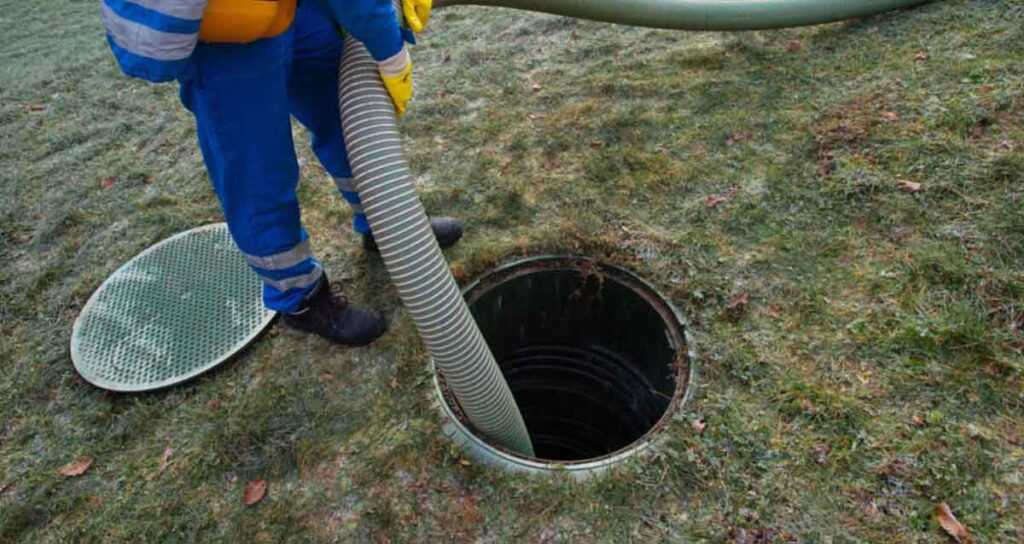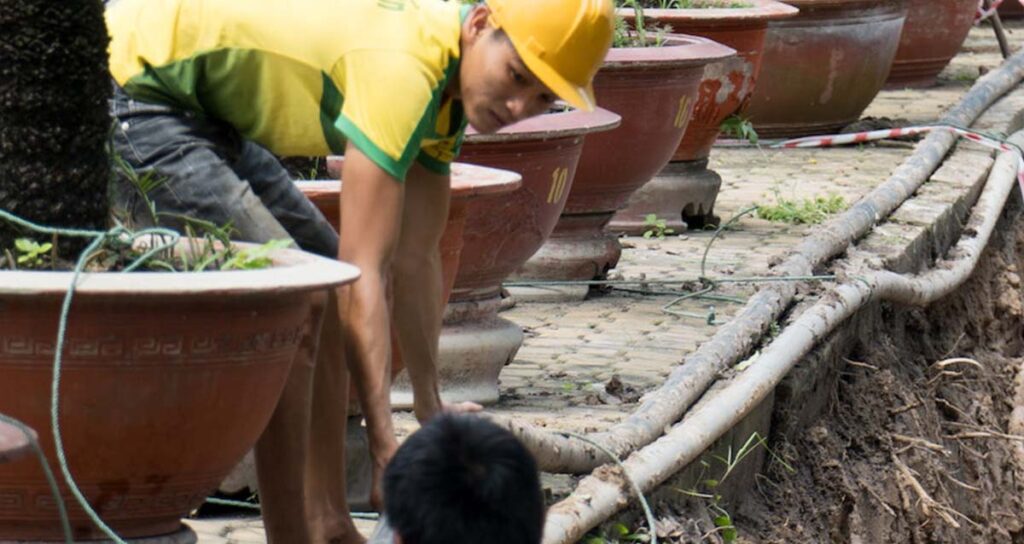- Free Estimates

If you’re a homeowner in Staten Island, properly maintaining your septic system is crucial for your family’s and the environment’s health. A clogged drain field can cause slow drains and unpleasant odors, so hiring Staten Island drain cleaning services is essential. This guide covers everything you need to know about unclogging your drain field, including signs of clogs, causes, precautions, and step-by-step instructions for DIY cleaning.
If your septic drain field is clogged, it can cause many important problems to identify and address quickly. Here are some of the most common signs of a clogged drain field:
If your drains are slow to empty, it could be a sign that your drain field is clogged and unable to handle the volume of water sent to it.
Do you hear gurgling or bubbling when you flush a toilet or run water down a drain? This can be a sign that the pipes leading to your drain field are clogged and causing air to be trapped in the plumbing.
One of the most unpleasant signs of a clogged drain field is a strong odor from the area. This can be caused by sewage backing up due to a clog.
If your drain field cannot properly absorb and filter the water being sent to it, you may notice an area of lush green grass or standing water over the drain field. This is a sign that the water is not being properly dispersed and is backing up.
If you notice any of these signs, it’s crucial to unclog your drain by hiring Staten Island drain cleaning services and prevent further damage to your septic system.

Preventing drain field clogs requires understanding their causes. Here are some common culprits of drain field clogs:
If your septic system cannot handle the volume of water being sent to it, it can lead to drain field clogs. This is especially true if you have a small septic system or if you’re using large amounts of water at once, such as doing several loads of laundry in a single day.
Certain items should never be flushed down the toilet or sent down the drain, as they can cause clogs and damage to your septic system. These items include diapers, wipes, feminine hygiene products, grease, and other non-biodegradable materials.
If your septic system is old or damaged, it may be unable to properly filter and process the water being sent to it. This can cause clogs in your drain field and other problems with your septic system.
Over time, tree roots and other obstructions can grow into your drain lines, causing blockages and preventing water from flowing freely through the system.
Take these necessary precautions Before performing Staten Island drain cleaning:
By taking these precautions, you can ensure a safe and effective cleaning process for your drain field.
If you’re feeling up for the challenge, you can try unclogging your drain field yourself using these simple Staten Island drain cleaning steps:
Remember to follow all safety precautions and wear appropriate protective gear throughout the process. If you’re uncomfortable with DIY drain line cleaning, it’s best to call a drain cleaning company for a professional Staten Island drain cleaning.

If DIY drain cleaning seems too daunting or your drain field is severely clogged, it’s time to call the professionals. A reputable Staten Island drain cleaning company can thoroughly clean using advanced equipment like hydro-jetting and video inspection tools. They’ll also be able to diagnose any underlying issues with your septic system and recommend repairs or replacements as needed.
Preventing drain field clogs is key to maintaining the health of your septic system. Here are some tips for preventing clogs and other issues:
Keeping your septic system running smoothly is crucial for the health and safety of your family and the environment. If you suspect a clogged drain field, taking immediate action is important. Whether you decide to tackle the job yourself or call a professional Staten Island drain cleaning service, proper safety precautions, and waste disposal are critical.
At Drain Cleaning Pros Staten Island, our experienced professionals are dedicated to helping you maintain your septic system. We offer thorough drain cleaning and preventative maintenance services to ensure your system functions properly. Contact us today to schedule an appointment.
Copyright © 2023 Drain Cleaning Expert Staten Island